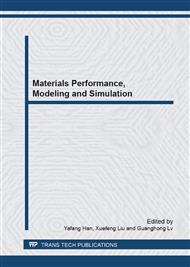p.1
p.7
p.13
p.28
p.35
p.41
p.47
p.54
Experimental and Numerical Study on Dieless Bending of 2-Piece Parallel Flow Microchannel Heat Exchanger
Abstract:
Parallel flow microchannel heat exchangers have been increasingly applied in HVAC (Heating, Ventilation and Air Conditioning) field due to their characteristics, such as high efficient heat transfer performance, compact form and low cost. Production rationalization of the heat exchanger is required for realization of a competitive, light-weight and easy-to-assemble product. The heat exchanger is usually bent to L-shape so as to decrease the volume of air conditioner. To correspond with design changes for multi-generation use and to achieve good forming quality, a dieless forming technique is developed to offer flexible manufacturing. Using this method, heat exchangers can be formed with variable bending radius conveniently, which can reduce the mold cost and obtain high productivity. Meanwhile, product defects such as fin damage can also be reduced because there is no physical contact against tools in the bending portion. In the present study, the forming principle of dieless bending process is first stated by theoretical analysis. Then to verify the proposed forming mechanism, a NC dieless bending machine is manufactured to implement the bending experiment. Finally, based on the verified FE model, the bending process for the 2-piece heat exchanger has been improved. As a result, the dieless bending process has been successfully developed and can be applied to produce square-shape heat exchanger with variable bending radius.
Info:
Periodical:
Pages:
13-27
Citation:
Online since:
March 2013
Authors:
Price:
Сopyright:
© 2013 Trans Tech Publications Ltd. All Rights Reserved
Share:
Citation:


